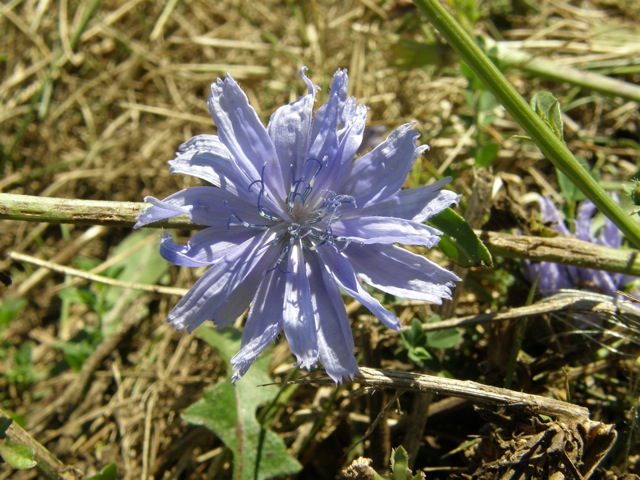Asteraceae, the daisy, sunflower or composite family.
Description:
Plant:
Stiff, often branching stem rises 1'-4' from basal leaves, bearing several,
blue, daisy-like, sessile flower heads.
Flowers:
Blue to violet daisy-like heads, to 1.5", each with 15-30 ray flowers.
Rays are square-tipped with 5 minute teeth. No disk flowers.
Split, dark-blue styles. Flowers are stalkless, one to three in axils
of small upper leaves.
Leaves:
Basal leaves dandelion-like, lobed and toothed, 3"-6", upper leaves small,
clasping stem, narrowly oval to lanceolate.
Fruit:
Dry seeds in a shallow husk formed by the bracts of the flower head.
Blooming:
June-October
Habitat:
Fields, roadsides, often mixed with Queen-Annes lace.
Comments:
Classic high-summer roadside flower.
Generally only a few heads open on a stem each morning, and
the flowers last only a day.
Introduced from Europe, the plant is sometimes a weed, but is also appreciated
for its edible properties.
The classic use is to roast and grind the root, which can be used as
a substitute for coffee. As a beverage this is good enough that it is
sometimes sought on its own merits, and is even sold commercially in
some areas.
The young leaves can be boiled and eaten like dandelion leaves, having the same
bitter qualities that can be reduced by cooking in several waters.
Grown from harvested roots in the dark, the blanched leaves can be
used as a bitter salad green.
Where to find it:
Common in field and lawn areas throughout the park
